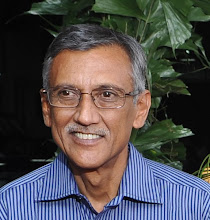Mr.Vinay Chand writes :-
I wonder if people can help me. I have for a long time not paid serious attention to claims that palms were senile or not at a particular age requiring replacement or at least cutting.
My own impression had been that there is no finite age of senility but rather at a particular age, I assumed to be 70 years, it becomes impractical to harvest coconuts from palms that are too tall. However, I keep coming across arguments that the palms need cutting at the age of 60 or even 40.
I need to look at the definition of senility in yield terms and the ag eat which it takes place. I am interested in this in general but in particular to the Pacific.
Best wishes,
Vinay Chand
230, Finchley Road,
London NW3 6DJ, UK
Tel: 44-20-7794 5977
Fax: 44-20-7431 5715
--------------------------------------------------------------------------------------
Answer for Mr.Vinay Chand
Dear Vinay Chand
you raise a very critical issue concerning the productive life of the coconut palm.
There can be different reasons for a decline in yield of which aging is the primary one, but declining soil fertility, damage to the trunk or to the root system due to soil disturbance, or the onset of insect of pathogen attack can also be involved.
Ageing in the coconut takes the form of a gradual reduction in the length of the frond after about 30 years of age, a litle later if the soil fertility and year-round water supply are favourable.
As the palm ages the biomass allocated to trunk development declines as fruit development takes precedence. The amount of trunk extension between successive fronds gradually declines and this causes the base of the emerging frond to force the frond that preceded it to decline "outwards" from its position in the canopy, so that over time the full canopy of the palm has many of its older fronds drooping below a horizontal angle. Such fronds intercept less radiation so the biomass supply from photosynthesis slowly declines. The result is shorter fronds. This process, by sixty years of age, will have reduced light interception of a plantation from perhaps 80% at its peak to 40%. Yield will be proportionately decreased. Beyond 60 years it continues to decline.
I have observed palms on Taveuni Island of Fiji that were 100 years old and still had a healthy colour in the fronds, but the yield was perhaps 20 fruit. Peak yield in that environment would have been well in excess of 100 fruit per palm per year.
I and Dr Ashburner wrote a chapter for the book Handbook of Industrial Crops in 2004. The reference is as follows:
Foale, M.A. and Ashburner, R (2004) The coconut palm. Chapter 6 in: Handbook of Industrial Crops, VL Chopra and KV Peter (Eds). Indian Council for Agricultural Research, New Delhi, and Haworth Reference Press, New York
In that chapter the yield story outlined above is dealt with in more detail. I hope that it will be of use to you.
sincerely
Mike Foale
Monday, April 20, 2009
This message give you a idea about coconut trees age:-
Subscribe to:
Post Comments (Atom)

No comments:
Post a Comment